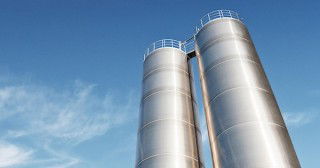The Technical Forum has covered the topic of the cyclic processes taking place in a cement kiln on a number of occasions over the last 15 years. Regular readers may think that there is not much more to be said on the subject. However, these processes remain one of the most frequent sources of questions and, therefore, it is perhaps time to revisit this topic.
Let’s start by talking about the cyclic processes within the cement kiln. Most people who have any knowledge of the industry know about the alkali cycle between the rotary kiln and the preheater. The salts of the alkali metals, potassium (K) and sodium (Na), melt or sublimate as they pass down the cement kiln. As the molten alkali salts approach the burning zone, their vapour pressure increases causing them to progressively evaporate and be carried back to the preheater in the combustion product gases from the main burner. Some pass through the burning zone and out in the clinker, but a significant proportion evaporates and is carried back to the preheater.
